February 2023
February 8, 2023
For Carl Andre
For Carl Andre is a 1970 artwork by Lynda Benglis. It consists of a heap of polyurethane foam sitting in the corner of a room. It's owned by the Modern Art Museum of Fort Worth.
The title refers to the sculptor Carl Andre, known for his ultra-minimalist works. For instance, one of Andre's more famous works, Equivalent VIII, consisted of a rectangular stack of bricks. The Fort Worth Art Museum catalog notes:
So it's not "strictly pejorative," but maybe it's slightly so? Or satirical?
Posted By: Alex - Wed Feb 08, 2023 -
Comments (3)
Category: Art, 1970s, Satire
Miss Color TV
Apparently the contest continued beyond 1956 (first and second images), because the advertisement that follows is from 1959.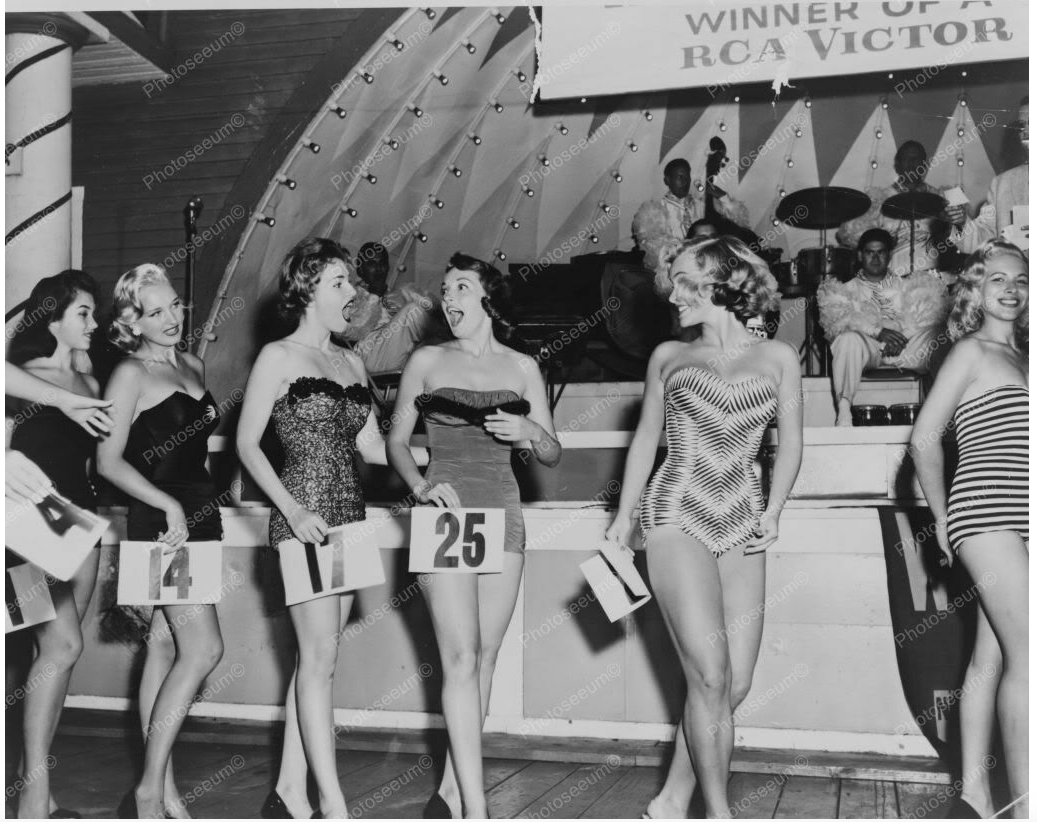
Ann Daly (No. 25) screams as she is declared "Miss Color-TV" in beauty contest at Palisades Amusement Park, N.J.; other contestants stand alongside her.
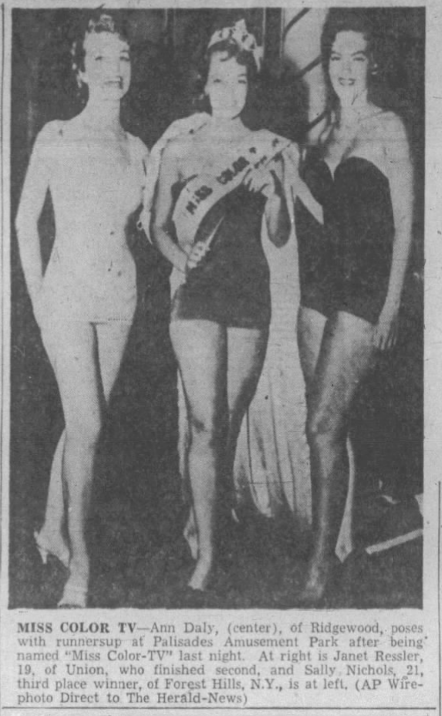

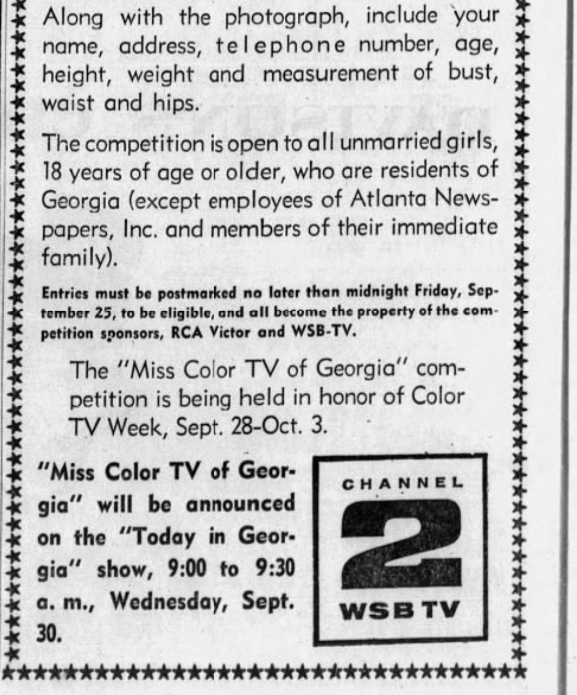
Posted By: Paul - Wed Feb 08, 2023 -
Comments (1)
Category: Awards, Prizes, Competitions and Contests, Beauty, Ugliness and Other Aesthetic Issues, Television, 1950s
February 7, 2023
Heating Gas From White Clover
The future in which our energy needs were met by white clover never materialized.I wonder if there was something special about white clover that produced more/better gas? Or had they simply succeeded in producing the kind of biogas that can be derived from any plant material?

St. Lous Post-Dispatch - Nov 17, 1935

Lowry City Independent - Dec 26, 1935
ST. Paul, Minn. Nov. 6 (1935) — Discovery of a method for manufacturing a commercially adaptable gas from ordinary clover was claimed today by Dean R.U. Jones, head of the MacAlaster college chemistry department, for two of his students.
Dean Jones attributed "great possibilities" to the discovery. William Mahle and Harold Ohlgren, the latter a football star, said they developed the gas from a secret process, accidentally encountered.
Both seniors, Marle and Ohlgren conducted experiments under the direction of Dean Jones and Prof. R.B. Hastings of the college physics department. They worked with white clover plucked from roadsides.
"I am convinced," Dean Jones said, "there are great possibilities in the boys' discovery, and I believe it can be worked out commercially. I am proud of the boys, for I gave them a problem and they went far ahead of me."
Posted By: Alex - Tue Feb 07, 2023 -
Comments (4)
Category: 1930s, Power Generation
Follies of the Madmen #555
The Wikipedia page.
Posted By: Paul - Tue Feb 07, 2023 -
Comments (0)
Category: Cryptozoology, Destruction, Advertising, Cereal, United Kingdom
February 6, 2023
God Speaks To Modern Man
Looks like he's asking for a raise.
The illustrations inside the book (which you can read for free via archive.org) are equally odd.









Posted By: Alex - Mon Feb 06, 2023 -
Comments (3)
Category: Religion, Books, 1950s
Trick Bass Viol
I would have enjoyed seeing the dogs emerge from the viol itself, but--as I interpret the patent--they are in the box at the base of the instrument. Still, a musical instrument filled with beer is also acceptable.Original patent here.
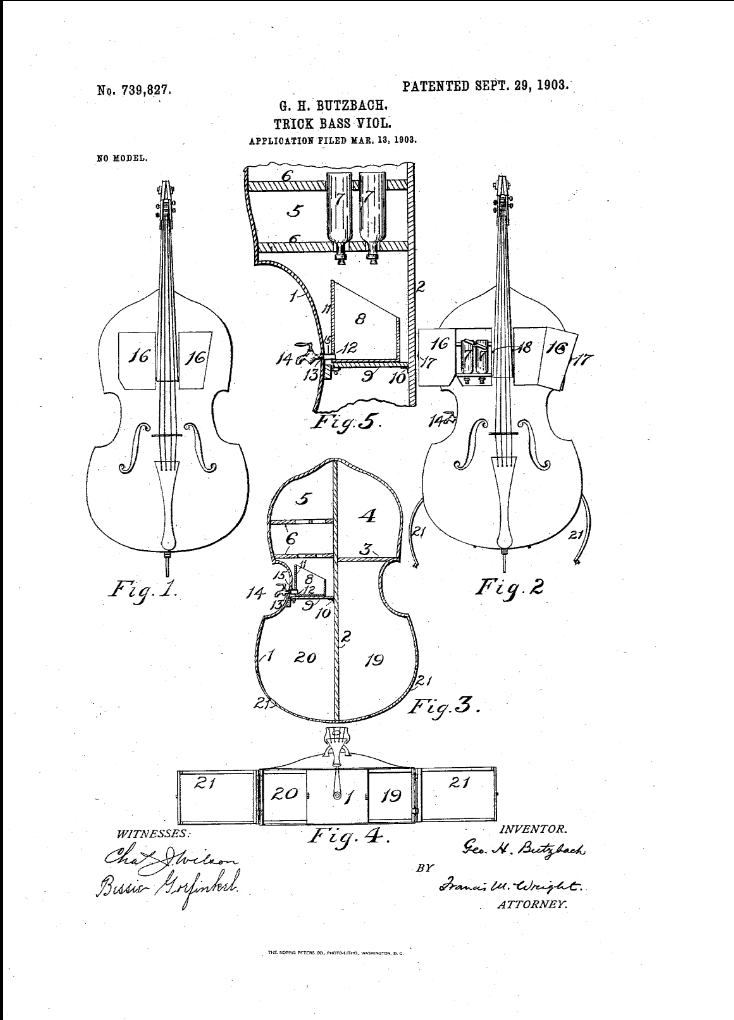
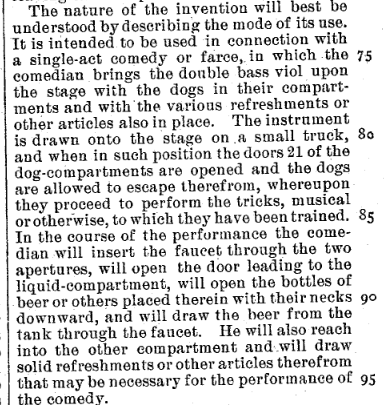
Posted By: Paul - Mon Feb 06, 2023 -
Comments (1)
Category: Magic and Illusions and Sleight of Hand, Music, Patents, Dogs, 1900s, Alcohol
February 5, 2023
Puppidog Water for the face
In her 1690 pamphlet Mundus Muliebris, Mary Evelyn included a recipe for a woman's facial lotion. She called it "Puppidog Water for the Face":The recipe was intended to be satirical, but Fenja Gunn, in her 1973 book The Artificial Face: A History of Cosmetics, notes that it was satire rooted in contemporary realities — notably the persistent rumor that Elizabeth I's pomade was made from puppy dog fat, and the seventeenth-century belief that drinking puppy dog urine was good for the complexion.
Some more info about puppy dogs used as moisturizers can be found on the Early Modern Medicine blog:
Takes Sallet Oil four pound, two Puppy-dogs newly whelped, Earthworms washed in white Wine one pound; boil the Whelps til they fall in pieces then put in the worms a while after strain it, then with three ounces of Cypress Turpentine, and one ounce of Spirits of Wine, perfect the Oil according to Art.
Posted By: Alex - Sun Feb 05, 2023 -
Comments (2)
Category: Beauty, Ugliness and Other Aesthetic Issues, Dogs, Seventeenth Century
Pixillation
The creator's Wikipedia page.
Posted By: Paul - Sun Feb 05, 2023 -
Comments (1)
Category: Movies, Special Effects, Surrealism, Psychedelic, 1970s
February 4, 2023
Win A Diamond Doorknob
Dr. Pepper celebrated its 75th anniversary in 1960, and in honor of this ran a contest with the unusual prize of a diamond doorknob. Specifically: "a doorknob of special design encrusted with 50 small diamonds and a huge two-carat, blue-white diamond mounted in its center. As the grand award the diamond doorknob will be attached to a $25,000 Swift Home having a family-size Refinite-Shedon swimming pool in its backyard and a new Rambler station wagon in its driveway."
Edith Dillion of Roanoke, VA eventually won the prize. Reportedly she sold the house but kept the doorknob. And perhaps the doorknob is still owned by the Dillion family.
Posted By: Alex - Sat Feb 04, 2023 -
Comments (2)
Category: Awards, Prizes, Competitions and Contests, Soda, Pop, Soft Drinks and other Non-Alcoholic Beverages, 1960s
Brief Intro to PRESTEL
This kind of tech will never catch on!
Posted By: Paul - Sat Feb 04, 2023 -
Comments (2)
Category: PSA’s, Technology, 1990s, United Kingdom
| Get WU Posts by Email | |
|---|---|

| Who We Are |
|---|
| Alex Boese Alex is the creator and curator of the Museum of Hoaxes. He's also the author of various weird, non-fiction books such as Elephants on Acid. Paul Di Filippo Paul has been paid to put weird ideas into fictional form for over thirty years, in his career as a noted science fiction writer. He has recently begun blogging on many curious topics with three fellow writers at The Inferior 4+1. Chuck Shepherd Chuck is the purveyor of News of the Weird, the syndicated column which for decades has set the gold-standard for reporting on oddities and the bizarre. Our banner was drawn by the legendary underground cartoonist Rick Altergott. Contact Us |

